At Perform 2022, the theme is “empowering the game changers.” The conference and this guide indicate how modern observability helps IT pros manage complex multicloud environments.
As strained IT, development, and security teams head into 2022, the pressure to deliver better, more secure software faster has never been more consequential. Modern observability that helps teams securely regain control of complex, dynamic, ever-expanding cloud environments can be game-changing.
At our virtual conference, Dynatrace Perform 2022 on February 7 – 9, the theme is “Empowering the game changers.”
Empowering the game changers at Dynatrace Perform 2022
Managing cloud complexity becomes critical as organizations continue to digitally transform. Over the past 18 months, the need to utilize cloud architecture has intensified. Organizations seek to modernize, reduce costs, and adjust to the realities of globalization, increased competition in virtually every industry, and shifts in economic development since the emergence of COVID-19.
A key arrow in the quiver for game-changers when developing and managing modern software is automatic, intelligent observability. Modern IT and development environments include multiple public clouds, dynamic containers, and widely distributed microservices. But managing and securing these environments can be downright impossible without technology to automatically identify and alert users to issues.
Teams can no longer effectively manage and secure today’s multicloud environments using traditional monitoring tools. While conventional monitoring scans the environment using correlation and statistics, it provides little contextual information for remediating performance or security issues. On the other hand, modern observability enables IT pros to gather real-time information on their environments, identify the root cause of issues, and take prompt, precise action to remediate problems.
IT professionals understand they need a new approach to monitoring and securing their environments. They know these environments are too expansive, porous, and complex for IT teams to manage with human resources alone. Instead, teams need modern observability to automatically discover and fix performance and security problems immediately.
At Dynatrace Perform 2022, we’ll explore how a modern observability platform helps IT teams boost performance and ensure application security through vulnerability management. The advantage of modern observability helps IT teams free their time for revenue-generating tasks rather than fire-fighting ones. In what follows, we survey some of the capabilities of a modern observability platform and themes we will highlight at Dynatrace Perform 2022.
Modern observability vs. monitoring
As dynamic systems architectures increase in complexity and scale, IT teams face mounting pressure to track and respond to the activity in their multi-cloud environments. As a result, teams need a solution that provides immediate, actionable answers to save time and effort.
Monitoring that relies solely on correlation produces a large volume of data teams must sift through to deduce the underlying causes of performance and security issues. But this statistics-based approach generates too much data and not enough context, which requires expert analysts to draw conclusions that amount to educated guesses.
In contrast, a modern observability platform uses artificial intelligence (AI) to gather information in real-time and automatically pinpoint root causes in context. This precision gives teams immediate and reliable insight they can use to automate responses. Teams can understand exactly which systems and services are affected and have a clear path of action.
Check out these resources to learn more about modern observability and how it contrasts with traditional monitoring.
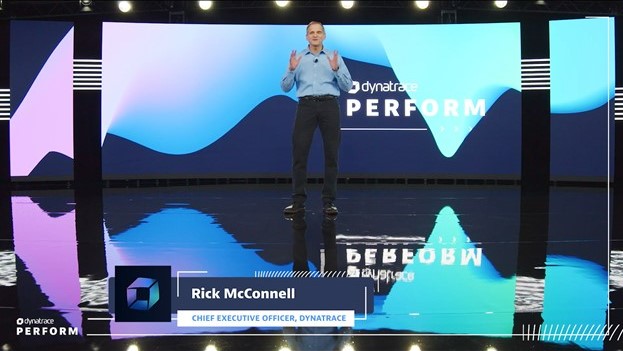 |
Modern observability platform is onramp to digital transformation: Dynatrace Perform 2022, reporter’s notebook – Blog
At this year’s Perform, CEO Rick McConnell and CMO Mike Maciag unpack the power of modern observability and AIOps as organizations traverse digital transformation. |
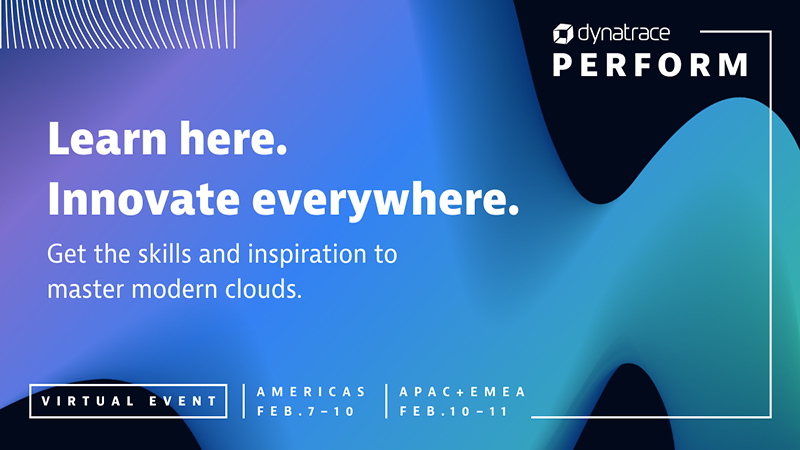 |
IT teams seek observability for, control over, serverless architectures – Blog
At Dynatrace Perform 2022, we highlight how modern observability helps augment the advantages and cure the ills of serverless architecture. |
 |
Observability vs. monitoring: What’s the difference? – Blog
Understanding the difference between observability and monitoring helps DevOps teams understand root causes and deliver better applications. |
 |
Modern approaches to observability and monitoring for multicloud environments – Blog
Observability and monitoring solutions are not created equal. Only observability can transform multicloud data into actionable intelligence. |
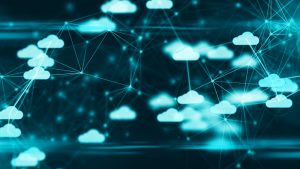 |
5 challenges to achieving observability at scale – eBook
To understand highly distributed cloud-native technologies, teams need observability that scales using fewer tools, not more. Explore the five main challenges to achieving observability—and learn how to overcome them. |
 |
Upgrade to advanced observability for answers in cloud-native environments – eBook
With automation and AI, observability delivers actionable answers that ensure cloud-native applications work perfectly across the enterprise. |
For more about the value of Dynatrace observability, follow the Advancing Dynamic Cloud-Native Workloads track at Dynatrace Perform 2022 and check out the Observability resource center.
Application security and vulnerability management
Modern cloud-native environments rely heavily on microservices architectures. This poses a dilemma for application teams responsible for innovation: How can they comply with ever-increasing security requirements while managing fast release cycles for hundreds of microservices? If teams lack an automated approach to application security, it can drastically slow down your ability to release new application functionality securely.
As teams adopt DevSecOps practices, which integrate security and vulnerability management into development and operations, they also incorporate a security mindset into their operational culture.
An automatic and intelligent observability platform with runtime vulnerability management capabilities can change the game. With comprehensive vulnerability detection and analysis that span pre-production and production environments, organizations can consolidate and streamline their security, development, and operations toolchains and processes.
As a result, responsible teams across an organization can develop and operate secure, vulnerability-free software. This comprehensive run-time approach to vulnerability management can detect critical security exposure such as Log4Shell (a vulnerability in the Log4j Apache library detected in late 2021) in production.
Discover more about Dynatrace Application Security and its vulnerability management capabilities from these sources:
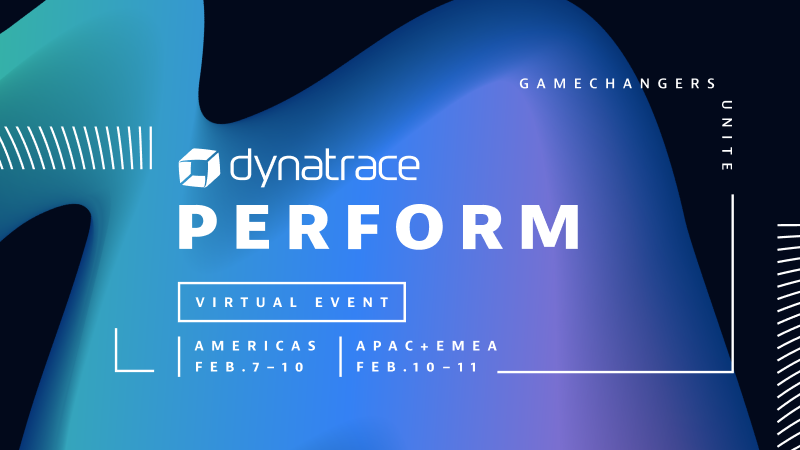 |
Advance DevSecOps practices with a vulnerability management strategy – Video
Adding a vulnerability management strategy to your DevSecOps practices can be key to handling threats like Log4Shell. |
 |
Why vulnerability management enhances your cloud application security strategy – Blog
Application security and managing software vulnerabilities are more important than ever as organizations use open-source software and cloud-based services. At Dynatrace Perform 2022, the Advancing DevOps and DevSecOps track explores how you can better secure applications in dynamic environments. |
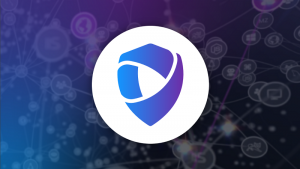 |
Dynatrace Application Security protects your applications in complex cloud environments – Blog
Utilizing cloud-native platforms, Kubernetes, and open-source technologies requires a radically different approach to application security. |
 |
What is application security? And why it needs a new approach – Blog
Dynamic IT environments have made application security more complex. Learn how your organization can create software quickly and securely. |
 |
Vulnerability assessment: Protecting applications and infrastructure – Blog
What is a vulnerability assessment? Vulnerability assessment tools are essential for protecting IT infrastructure, applications, and data. |
To learn more about Dynatrace Application Security and vulnerability assessment, follow the Advancing DevOps and DevSecOps track at Dynatrace Perform 2022, and check out the Application Security resource center.
DevOps and DevSecOps orchestration
DevOps and DevSecOps adoption has exploded in response to the increasing demand for technology teams to deliver greater functionality faster and more securely. DevOps brings developers and operations teams together and enables more agile IT. DevSecOps adds application security into shift-left (pre-production) and shift-right (production) operations.
Still, while DevOps and DevSecOps practices enable development agility and speed, they can also fall victim to tool complexity and data silos. Many organizations suffer from inefficiency because they’re juggling too many DevOps tools or using tools that don’t meet their needs. Some DevOps toolchains fail to yield value because teams select tools based only on individual technology considerations rather than the business value they provide.
Successful DevOps orchestration is a constant evolution of tools, processes, and communication on a journey to speed, stability, and scale. An automatic and intelligent observability platform optimized for the DevOps and DevSecOps pipeline—from CI/CD to user experience—promotes a culture of experimentation, risk, and trust teams need to succeed.
Learn more about how the Dynatrace platform approach to DevOps and DevSecOps facilitates the software delivery life cycle from these resources:
 |
DevOps orchestration breaks quality-speed stalemate in SDLC – Video
DevOps orchestration enables developers, site reliability engineers, and DevOps teams to develop at the pace of business without sacrificing code quality as they develop code throughout the software development lifecycle. |
 |
Automating DevOps practices fuels speed and quality – Blog
DevOps practices enable business speed and innovation. But increasing toolchain complexity and the faster pace of software development can undermine DevOps benefits. At Dynatrace Perform 2022, the DevOps track will highlight how automating DevOps practices reduces DevOps workflow problems. |
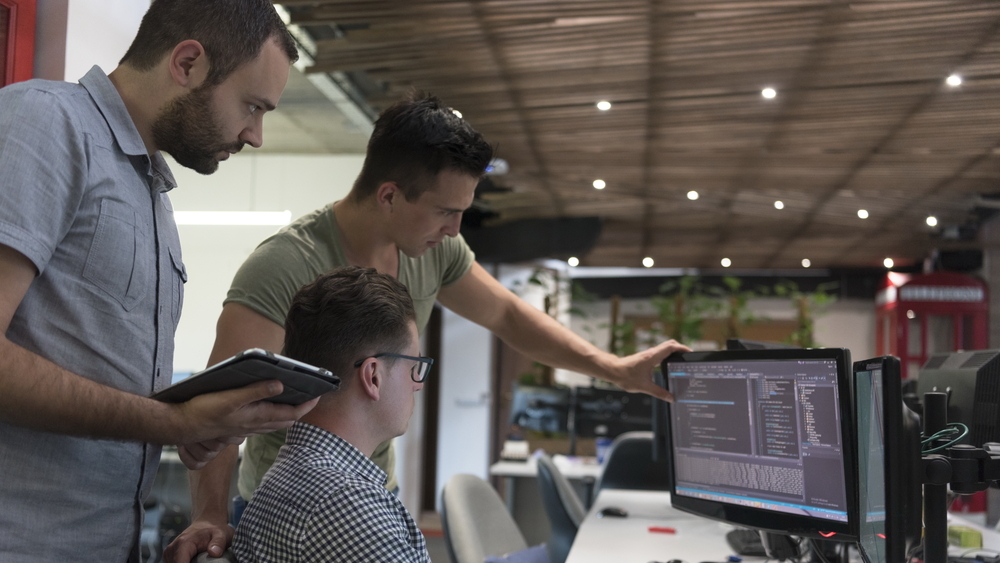 |
What is DevOps? Unpacking the rise of an IT cultural revolution – Blog
What is DevOps? Learn how development and operations teams can improve delivery and outcomes with this approach and what tools they need to succeed. |
 |
What is DevSecOps? And what you need to do it well – Blog
What is DevSecOps? DevSecOps connects three different disciplines: development, security, and operations. Learn how security improves DevOps. |
 |
Successfully scaling DevOps – Webinar
In this webinar, we talk with IT systems integrator avodaq AG about their DevOps and Kubernetes adoption journey. |
To see Dynatrace in action for DevOps and DevSecOps, follow the Advancing DevOps and DevSecOps track at Dynatrace Perform 2022.
For more about how Dynatrace does DevOps, see the DevOps resource center.
For more about Dynatrace DevSecOps and Application Security, see the Application Security resource center.
AIOps solution
As organizations adopt more cloud-native technologies, their burgeoning multicloud environments offer many benefits, such as modular app design, dynamic app scalability, and faster time to market.
But these dynamic environments also pose challenges for IT teams across the organization. Apps and services depend on other services and infrastructure, but each tool and cloud platform stands alone. Dispersed environments mean teams struggle to detect and anticipate issues, optimize applications, and automate DevSecOps workflows. While digital transformation is in full swing across the industry, a fragmented IT operations strategy can slow these modernization efforts and limit their benefits.
AIOps, or artificial intelligence for IT operations, uses AI and advanced analytics to manage IT. But not all AI is created equal. An AIOps solution that uses automatic and intelligent observability and causation-based AI can unlock productivity across the organization. An AIOps platform designed for dynamic multicloud environments turns teams from reactive to proactive. This agility enables teams to optimize apps and DevSecOps workflows, and accelerates every team’s transformation.
Dynatrace Davis® is a radically different AI engine. To learn more about Dynatrace AIOps, check out these resources.
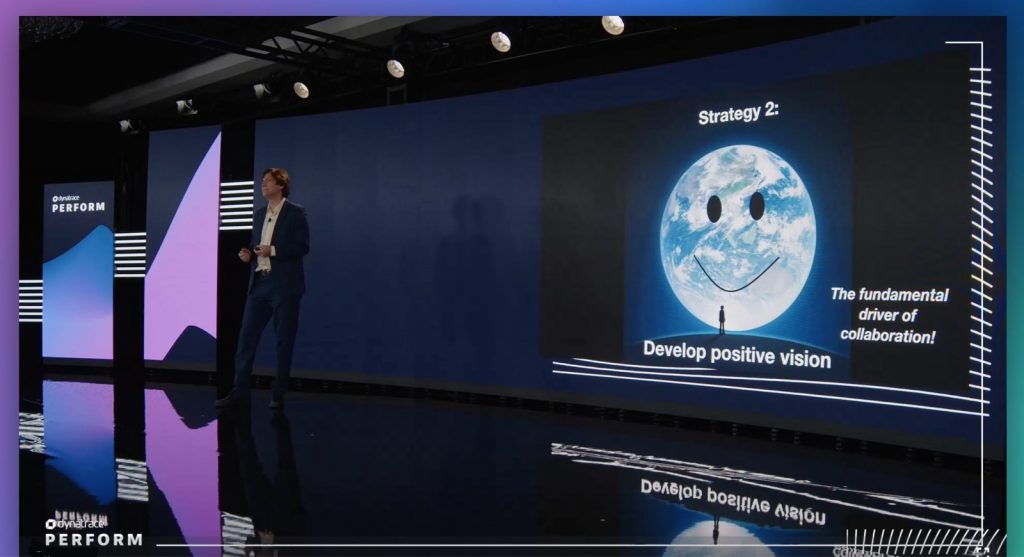 |
Artificial intelligence: The ultimate technology for game-changers – Max Tegmark at Perform 2022
MIT physics professor and Future of Life Institute co-founder Max Tegmark shares his big thoughts on the big possibilities of AI to change human innovation. |
 |
AIOps capabilities drive intelligent cloud observability – Video
AIOps capabilities help IT teams cope with the overwhelming complexity of multicloud and hybrid cloud environments. While AIOps that relies on correlation-based machine learning isn’t new, causation-based AIOps is a game-changer. |
 |
AIOps strategy central to proactive multicloud management – Blog
At Dynatrace Perform 2022, the AIOps track will explore how an AIOps strategy helps organizations manage dynamic, multicloud environments. |
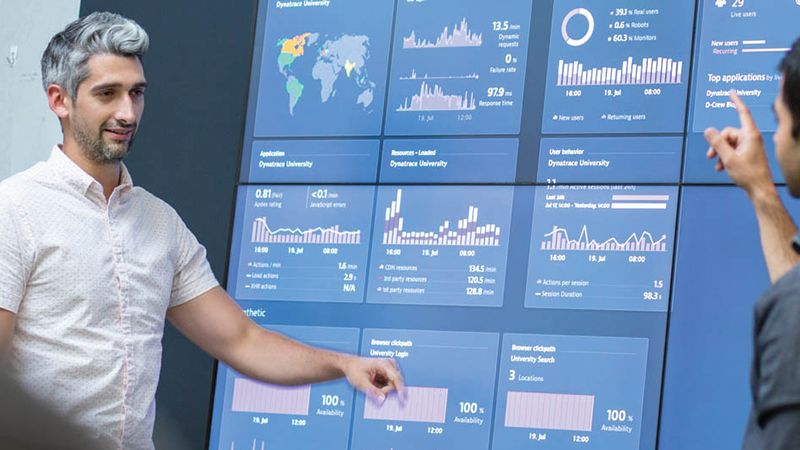 |
What is AIOps? AI for ITOps–and beyond – Blog
What is AIOps? It brings AI to ITOps–but a modern approach to AIOps using deterministic AI makes it so much more. Learn why. |
 |
Meet the mind behind the magic: Davis® AI explained – Interactive eBook
In this animated eBook, we dive into Davis AI and reveal how it changes the game for AIOps across the IT organization. |
 |
How an AIOps platform can shift left–and why it should – Blog
As organizations layer more technologies into their DevOps toolchains, an AIOps platform that can shift left is a good strategy. |
Follow the Advancing your AIOps agenda track at Dynatrace Perform 2022. For even more on Dynatrace AIOps, check out the AIOps/AI and Automation resource center.
Digital experience monitoring and business analytics
Successful user journeys begin and end with a user’s experience of your digital touchpoints. Whether users are on a PC or accessing your services on a mobile device, digital experiences now define successful business outcomes. Lagging applications, broken functionality, or confusing experiences can easily result in lost business: Switching to a competitor’s offering is just a tap or mouse click away.
But the proliferation of tools and user data from cloud-native applications, open-source solutions, and native mobile apps makes a platform approach to digital experience monitoring (DEM) essential for analyzing user experiences.
Connecting business outcomes to IT metrics for both mobile and web apps requires automatic and intelligent observability that extends into digital experience and business analytics. An AI-driven observability platform delivers front-to-back visibility and actionable analytics in context with a multitude of apps, services, and multicloud infrastructure. It also works with third-party tools and standards, like Google’s Core Web Vitals, to continuously improve site performance and user experience.
Observability-driven DEM enables teams to produce five-star, crash-free mobile apps and optimize every step of the user journey for both web and mobile users, ultimately improving customer experience and driving better business outcomes.
To learn more about the Dynatrace observability platform approach to digital experience monitoring, check out these resources:
 |
What is digital experience? – Blog
DEM helps teams understand the context of what’s going on amid the interactions happening across the multitude of apps, services, and infrastructure in a multicloud environment. |
 |
What is session replay? Discover user pain points with session recordings – Blog
Session replay is a technology that creates video-like recordings of actions taken by users interacting with a website or mobile application. Analysts can then watch a user’s mouse movements to identify the user’s activity, problem spots, and what’s frustrating them or causing them to abandon their journey. |
 |
What is synthetic monitoring? How emulating user paths improves outcomes – Blog
Synthetic monitoring is an application performance monitoring practice that emulates the paths users might take when engaging with an application |
 |
Business observability and the travel and hospitality industry: a key to successful recovery – Blog
A lot has changed in the global travel industry. Understanding how customers’ digital experience impacts business outcomes is critical to recovery. |
To see the value of the Dynatrace platform for digital experience and business analytics, follow the Driving better business outcomes for LOB track at Dynatrace Perform 2022.
For even more about Dynatrace and its observability platform approach to DEM, see the Digital Experience resource center.
Experience modern observability at Dynatrace Perform 2022
Explore all the ways modern observability transforms application performance monitoring, application security, DevOps/DevSecOps, AIOps, and more by joining us for our virtual event, Dynatrace Perform 2022, on February 7 – 9.
Meet Simone Biles, the world’s most decorated gymnast, Kelsey Hightower, principal engineer at Google, and AI and physics professor Max Tegmark from MIT. And learn from Dynatrace’s own technologists, including Chief Technology Officer Bernd Greifeneder, Technology Strategy Fellow and Pure Performance podcast host Andreas Berger, CEO Rick McConnell, and many more.
As a risk-free virtual event, you can attend every session and event from anywhere in the world.

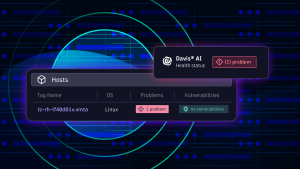
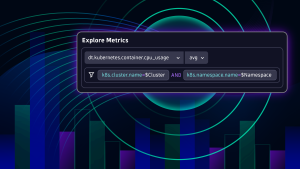


Looking for answers?
Start a new discussion or ask for help in our Q&A forum.
Go to forum